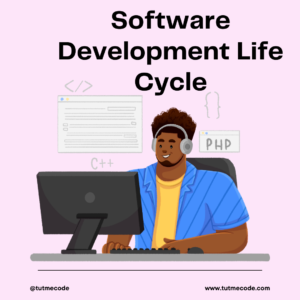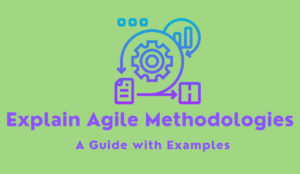Welcome to the ultimate Python tutorial for aspiring developers. This all-encompassing guide will help you navigate through the world of Python programming, covering everything from the basics to advanced concepts. Whether you are a complete beginner or an experienced developer looking to expand your skills, this tutorial has something for everyone. So, without further ado, let’s dive into the world of Python!
1. Introduction to Python
Python is a versatile, high-level programming language known for its simplicity, readability, and flexibility. It is widely used in various industries, such as web development, data science, and artificial intelligence.
1.1. Why Learn Python?
- Ease of learning: Python is considered one of the easiest programming languages to learn due to its simple syntax and readability.
- Versatility: Python is used in many applications, making it a valuable skill for any developer.
- High demand: Python developers are in high order across various industries, resulting in lucrative job opportunities.
- Strong community: Python has a large and active community of developers who are always willing to help and contribute.
1.2. Python’s Popularity
Python’s popularity has skyrocketed over the past few years, becoming one of the most widely used programming languages globally. Several factors contribute to Python’s popularity, such as its simplicity, versatility, and growing number of applications in emerging technologies like AI, machine learning, and data science.
2. Setting Up Your Python Development Environment
Before diving into the Python tutorial, you’ll need to set up your development environment. This section will guide you through the process of installing Python and setting up a code editor.
2.1. Installing Python
To get started with Python, you’ll need to have it installed on your computer. Visit the official Python website and download the appropriate version for your operating system.
2.2. Choosing a Code Editor
A code editor is an essential tool for any developer. There are several code editors available for Python development, such as:
Choose the one that best suits your preferences and needs.
3. Python Basics
Now that you have your development environment set up let’s dive into the Python tutorial by learning the basics.
3.1. Syntax and Variables
Python’s syntax is simple and easy to read. Variables in Python are used to store values, and their types are determined automatically.
# Defining a variable x = 10 y = "Hello, World!" print(x) print(y)
3.2. Data Types
Python supports various data types, including:
- Integers: Whole numbers, e.g.,
42 - Floats: Decimal numbers, e.g.,
3.14 - Strings: Text, e.g.,
"Hello, World!" - Booleans:
TrueorFalse - Lists: Ordered, mutable collections, e.g.,
[1, 2, 3] - Tuples: Ordered, immutable collections, e.g.,
(1, 2, 3) - Dictionaries: Key-value pairs, e.g.,
{"key": "value"}
3.3. Control Structures
Control structures in Python include:
- If statements: Used for conditional execution
- For loops: Iterate through a sequence
- While loops: Execute a block of code as long as a condition is met
# If statement
if x > 10:
print("x is greater than 10")
elif x < 10:
print("x is less than 10")
else:
print("x is 10")
# For loop
for i in range(5):
print(i)
# While loop
counter = 0
while counter < 5:
print(counter)
counter += 1
4. Functions and Modules
Functions and modules are essential building blocks in Python, allowing you to create reusable code.
4.1. Functions
Functions in Python are defined using the def keyword and can accept arguments and return values.
def greet(name):
return f"Hello, {name}!"
print(greet("John"))
4.2. Modules
Modules are Python files that contain functions, classes, and variables. You can import modules using the import keyword.
# Importing a module import math # Using a function from the imported module print(math.sqrt(16))
5. Object-Oriented Programming
Python supports object-oriented programming, allowing you to create and work with classes and objects.
5.1. Classes and Objects
Classes define the blueprint for objects, while objects are instances of classes.
class Dog:
def __init__(self, name, age):
self.name = name
self.age = age
def bark(self):
print("Woof!")
# Creating an object
my_dog = Dog("Buddy", 3)
# Accessing object attributes and methods
print(my_dog.name)
my_dog.bark()
5.2. Inheritance
Inheritance allows you to create a new class that inherits the properties and methods of an existing class.
class Labrador(Dog):
def swim(self):
print("I can swim!")
# Creating an object of the derived class
my_lab = Labrador("Max", 2)
# Accessing inherited attributes and methods
print(my_lab.name)
my_lab.bark()
my_lab.swim()
6. Error Handling
Error handling in Python is achieved through the use of exceptions and the try, except, and finally keywords.
try:
x = 1 / 0
except ZeroDivisionError:
print("Cannot divide by zero")
finally:
print("This will always be executed")
7. Working with Files
Python provides built-in functions for working with files, such as reading and writing.
# Writing to a file
with open("example.txt", "w") as file:
file.write("Hello, World!")
# Reading from a file
with open("example.txt", "r") as file:
content = file.read()
print(content)
8. Libraries and Frameworks
Python has a rich ecosystem of libraries and frameworks that can help you in various domains, such as web development, data science, and machine learning.
8.1. Web Development
Some popular Python web development frameworks include:
8.2. Data Science
Python is widely used in data science, with libraries such as:
8.3. Machine Learning
Python is also popular for machine learning projects, with libraries like:
9. Best Practices
To write clean and efficient Python code, it’s essential to follow best practices, such as:
- Use meaningful variable and function names
- Keep functions small and focused
- Write comments and documentation
- Follow the PEP 8 style guide
10. Resources for Further Learning
To continue your Python journey, explore additional resources, such as:
With this comprehensive Python tutorial, you’re now well-equipped to begin your journey as a Python developer. Remember to practice regularly, ask questions, and engage with the Python community to hone your skills further. Happy coding!




